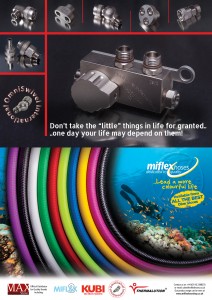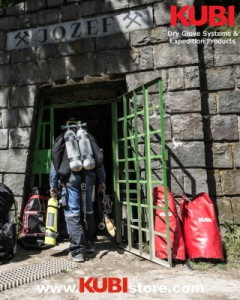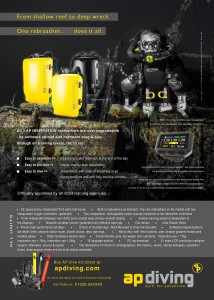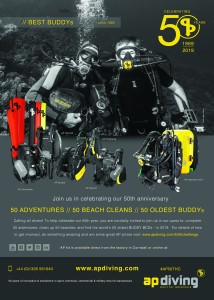DICTIONARY OF EGYPTIAN SHIPWRECKS O
DICTIONARY OF EGYPTIAN SHIPWRECKS- O
FURTHER DETAILS CAN BE DOWNLOADED FROM
www.KUBIstore.com & www.Miflexhoseshop.co.uk
M.V. OLDEN
A Panamanian bulk carrier, her final voyage was from Hamburg to Jeddah with a cargo of barley. Again eyewitness accounts have helped to reveal the sinking of this vessel .Due to a navigation error and partly due to confusion of wrecked ships sitting on top of the reef, the Olden ran headlong towards the Kimon M, struck her and the surrounding reef. An anchor was deployed but she began to sink quickly. The entire crew was rescued by the RO-RO Container ship GALA DE MAR. Her “official” position is totally incorrect The Panamanian bulk carrier Olden was 213 mtrs long, of 27,288 tons and built in 1967 at Bremen. Her hull and machinery were valued at £3M.
M.V.ORKANGER
The M/T Orkanger was a tanker of 8029 Grt. delivered in September 1928 from the Ateleliers et Chantiers de la Seine Maritime Works & Cie., (Yard No. 51) Le Trait, France. The ship was 139.6 meters in length, 18.2 meters in beam, diesel powered, single screw with a cruising speed of 11 knots. The ship was laid up in San Pedro from 13 September 1930 until 07 February 1931, and then again from 02 October 1931 until 05 February 1932 due to the Depression. Laid up yet again in Stavanger, Norway for 2 and a half months. Just prior to WWII, the ship was chartered to the Norwegian State for a while and used as a depot for five months in Oslo, Norway.
Orkanger arrived Port Said from Abadan on May 26-1940, with a cargo of fuel oil for the Admiralty. She waited for orders until June 7, when she was ordered to continue to Malta, and left Port Said alone late that afternoon with 1 British officer, 2 naval ratings and 9 soldiers on board as passengers. On June10th they heard about Italy’s entry to the war over the radio, whereupon an envelope with secret orders was opened, and in accordance with instructions therein she turned around to head back. However, the next day she was ordered by a British cruiser to continue to Alexandria. Torpedoed, port side between tanks No. 6 and 7 at 22:55 on June 12 by the Italian submarine Naiade (Baroni), position 31 42N / 28 50E. The ship’s side and the deck outside the summer tank hatches was torn open so that the plates were projecting about 15′ up in the air, and oil from the tanks were flung all over the amidship causing complete darkness on the bridge for a while. The port, midships lifeboat was thrown on deck and smashed. Engine was stopped and the starboard midships boat as well as the 2 aft lifeboats were launched, 2 of which rowed away from the ship, while the starboard aft boat was ordered to wait for the captain, the 3 mates, the 1st engineer and the British officer who remained on board. An SOS was sent out, and after the damages had been investigated it looked like she could be saved, but at 23:05 another torpedo struck, this time aft in the engine room, destroying the lifeboat which was waiting alongside and killing 4 of the men in it. The remaining men, 5 of whom were injured were subsequently picked up by the other lifeboats. Orkanger slowly sank by the stern at about 23:30.
S.S.OSMANIEH
The Osmanieh was an RVRN Fleet Messenger (also classified as a Passenger/Cargo ship) built by Swan, Hunter & Wigham Richardson, Ltd. (Yard No. 761), Newcastle for the Khedivial Mail Steamship & Graving Dock Co., Ltd., London and launched 09 May 1906.She was 4041 tons,360 ft x 45 ft x 24ft and fitted with triple expansion engines. Contracted as a Hired Transport (HT) by the British Navy in 1916 for use during WWI which involved fleet support duties, primarily for the carrying stores and personnel.
On 31st December, 1917, under the command of LCDR David R. Mason (RNR), she was carrying troops and medical staff to Alexandria when she struck a mine on the starboard side amidships in a minefield which has been laid by the German submarine UC 34 under the command of Oberleutnant zue See Horst Obermuller at the entrance to the harbour at 31.10.8N/29.48.3E running 270-degrees at 100-meter internals. The vessel sank quickly taking with her: Lieutenant Commander D.R. Mason. (Commemorated – Alexandria (Hadra) War Memorial Cemetery) Two other officers. 21 of its crew. One military officer. 166 other ranks.Eight nurses (Also commemorated – Alexandria (Hadra) War Memorial Cemetery).
It should be noted here that this is at,or near, the same location which the HMT Aragon and HMS Attack were torpedoed by the same submarine the previous day (approximately 31.18N/29.48 or .49E in 40-50 meters of water).
THE WRECK OF THE OTTOMAN TRADER
Wreckies are a funny breed-sometimes what you expect to blow them away is met with an indifferent grunt and sometimes you take a chance- and wow them! This 1700c coastal trader falls into the later category-it certainly wowed me.
Up until now our oldest find in the northern Red Sea was a small “puffer” in 6 mtrs on Sha’ ab Ali’s west side-the “nail wreck” (dated by Durham University-thank you Andrew Yates –as 1850)
Any really old wrecks are usually smothered in coral, beneath sand or the wood has simply rotted away-so to see the hull of a 400 year old ship IS something special.
|
A selection of the beautiful artefacts recovered from the first official survey of the wreck.
The cargo has been identified as Turkish from around the 1700, and it is thought the vessel was on a south bound journey, having stopped at this ancient seaport on the Egyptian red Sea coast to re-provision.
Lying in sand in 40 mtrs at the base of a reef, the entire outline of this old ship can be seen as you descend-the 2 grey area’s clear into her holds ,full of pottery ranging from Ali Baba style Amphora to small hand held jugs. The peripheral is a field of huge wine vessels some with pointed bases, others with flat bases, half buried in the sand. There are no less than seven huge anchors, suggesting this was an enormous vessel. The ribs of the ship stand proud of the sea bed by a couple of mtrs, and although partly covered in sand, it is easy to work out the fore and aft sections of the vessel. The blandness of the scene is broken by vivid red sponges, sea squirts and soft corals clinging on to the curved ribs
.
A total of 7 huge iron anchors were found-indicating that this was indeed a huge vessel. The anchors evocative shape are now further enhanced with red sponge.
The sloping sand bank allows for parts of her keel be revealed, thick timbers running longitudinally through the site, but also indicates that more of the wreck remains undisturbed beneath the sand.
This is strictly a “look don’t touch” dive , but never the less the scene is an amazing window into the past. What must she have looked like? where had she been? where was she going? How did she sink? What treasures still lie beneath the sand? We can only look on and wonder.
Much of the cargo still remains scattered around the remains of the shipwreck, from huge vases to small hand held jugs.





